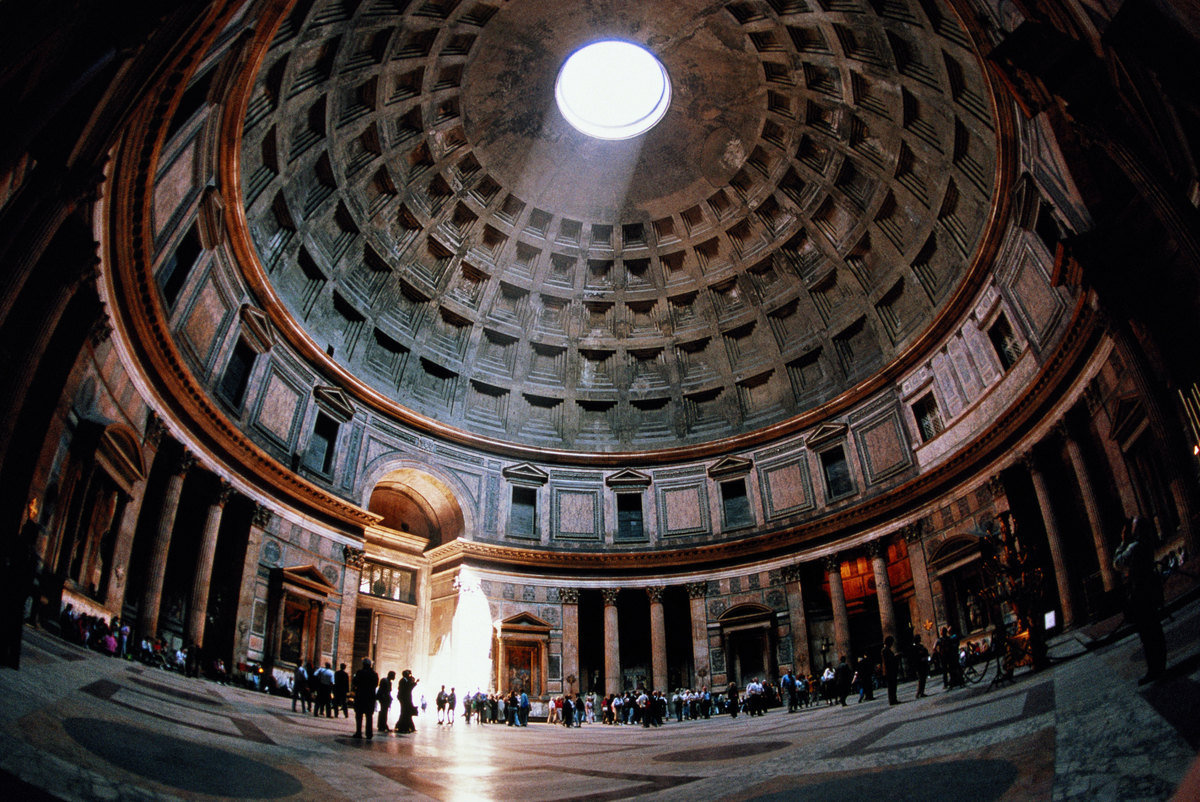I have a question about light diffraction. Take a look at these images of the Pantheon oculus.
Now what I don't understand, in the first picture, the light is coming in from overhead and forms a really huge light diffracted light cone on the floor.
In the second picture, the light enters at another angle, the cameraman also is at another location BUT the beams that pass through the hole look straight and not cone-like.
Why does the light beam become thinner as it enters at the slightly different angle, compared to the first picture?
Also at different times of the day, the casted light's radius keeps shrinking as the sun sets. Can you guys provide a comprehensive explanation/ visual demonstration why this happens so?


